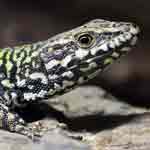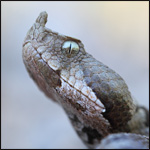Swiss
26 posts
• Page 2 of 3 • 1, 2, 3
Re: Swiss
Very nice atras! Also the slimy one!
- Tom Hoogesteger
- Posts: 122
- Joined: Sat Aug 29, 2009 12:10 pm
- Hometown: Jarvenpaa
- country: Finland
Re: Swiss
Very cool shots of beautiful animals and scenery. 
Regards,
Heiko
Regards,
Heiko
-

Heiko Wehner - Posts: 76
- Joined: Mon Jun 27, 2011 10:48 am
- Hometown: Marburg
- country: Germany
Re: Swiss
Nice shots !! Is the automn mating usual for snakes ?
- Pierre-Yves Vaucher
- Posts: 411
- Joined: Sun Oct 25, 2015 3:40 pm
Re: Swiss
Thanks ! As far as I know its common in the aspis type of the european vipers. I saw some same scenes in my terrarium with Vipera seoanei. The pelias grupe (berus groupe) only mates in spring, I believe.
But I dont know how it is in the colubrid parts...
But I dont know how it is in the colubrid parts...
-

Andre Schmid - Posts: 667
- Joined: Thu Jul 30, 2009 3:38 pm
- Hometown: Rottweil
- country: Germany
Re: Swiss
Pierre-Yves Vaucher wrote:Is the automn mating usual for snakes ?
For Vipera aspis - YES!
In autumn is the important time for spermatogenetic activity. Period of spermatocytogenesis and spermiogenesis is in summer and early aut5umn. Therefore sperm is available in autumn and in spring. Vipera aspis may mate in autumn and in spruing. n spring the first shedding of males is after the mating time!
A good reference would be: Nilson, G. & C. Andren (1997): Evolution, systematics and biogeography of palearctic vipers. In: Venomous snakes, Ecology, Evolution and snakebite (Eds. Thorpe, R.S., Wüster, W. & A. Malhotra), Symposia of the Zoological ociety of London. Oxford University press 70: 31 - 42.
Sorry, I dont have it, but maybe Wolfgang.............
Mario
-

Mario Schweiger - Site Admin
- Posts: 2233
- Joined: Wed May 06, 2009 7:57 pm
- Location: Obertrum, Salzburg, Austria
- Hometown: Obertrum
- country: Austria
Re: Swiss
The book 'The Encyclopaedia of Snakes" by Chris Mattison, which I have been reading recently, has a bit about reproductive strategies in temperate species - in species which produce sperm over the active season, like the European vipers with the 'aspis type' mating system, a pre-hibernation mating will serve to reduce the possibility that the snakes will not find each other (or other mates) in spring and therefore waste a breeding season. The females, once mated in autumn, store sperm in their reproductive system (lower part of the oviduct) over the winter and use it to fertilise the eggs which ovulate in the following spring.I don't think that the autumn mating will have an impact on spring mating (at least not for the female) though because I'm sure that the snakes will take the opportunity of fresh sperm over 6 or 7 month old sperm. Not so sure about the males which mated in autumn though, as they may have less sperm available than males which did not... I think there have been studies done which show that stored sperm has reduced fertility compared to fresh.
Not on a European species, but there was a study on sperm storage in an American species;
Aldridge, R. (1992) Oviductal anatomy and seasonal sperm storage in the southeastern crowned snake (Tantilla coronatum). Copeia, 1992(4): 1103-1106.
Some rattlesnakes ((some populations of Crotalus viridis viridis), Crotalus willardi, Sistrurus miliarius sterckeri, Sistrurus catenatus) mate in late summer or autumn and store sperm over winter to fertilise eggs the following spring, so this is not just a European thing. Seemingly an adaptation to a short active season and the problems associated with it.
Not on a European species, but there was a study on sperm storage in an American species;
Aldridge, R. (1992) Oviductal anatomy and seasonal sperm storage in the southeastern crowned snake (Tantilla coronatum). Copeia, 1992(4): 1103-1106.
Some rattlesnakes ((some populations of Crotalus viridis viridis), Crotalus willardi, Sistrurus miliarius sterckeri, Sistrurus catenatus) mate in late summer or autumn and store sperm over winter to fertilise eggs the following spring, so this is not just a European thing. Seemingly an adaptation to a short active season and the problems associated with it.
- Daniel Kane
- Posts: 363
- Joined: Tue Jun 16, 2009 7:35 pm
- Location: London
- Hometown: London
- country: England
Re: Swiss
I knew the phenomenon of sperm storage in spermathecae with Salamandra but not with aspis 
- Pierre-Yves Vaucher
- Posts: 411
- Joined: Sun Oct 25, 2015 3:40 pm
Re: Swiss
I know sperm storage from Agistrodon contortrix, Crotalus atrox, Crotalus vegrandis and Salamandra algira.
For the mountain species of rattlesnakes (Crotalus lepidus, aquilus, tristeriatus etc.) the breeding season is in May and June and the Neonates are born in the next year also from May till July.
For the mountain species of rattlesnakes (Crotalus lepidus, aquilus, tristeriatus etc.) the breeding season is in May and June and the Neonates are born in the next year also from May till July.
-

Jürgen Gebhart - Posts: 1423
- Joined: Fri Jun 26, 2009 8:17 am
- Hometown: Wiedergeltingen Bavaria
- country: Germany
Re: Swiss
Daniel Kane wrote:Some rattlesnakes ((some populations of Crotalus viridis viridis), Crotalus willardi, Sistrurus miliarius sterckeri, Sistrurus catenatus) mate in late summer or autumn and store sperm over winter to fertilise eggs the following spring,
The females of the mountain rattlesnake species don`t store the sperm. They start with the development after the mating during the summer.
-

Jürgen Gebhart - Posts: 1423
- Joined: Fri Jun 26, 2009 8:17 am
- Hometown: Wiedergeltingen Bavaria
- country: Germany
26 posts
• Page 2 of 3 • 1, 2, 3
Who is online
Users browsing this forum: No registered users and 47 guests